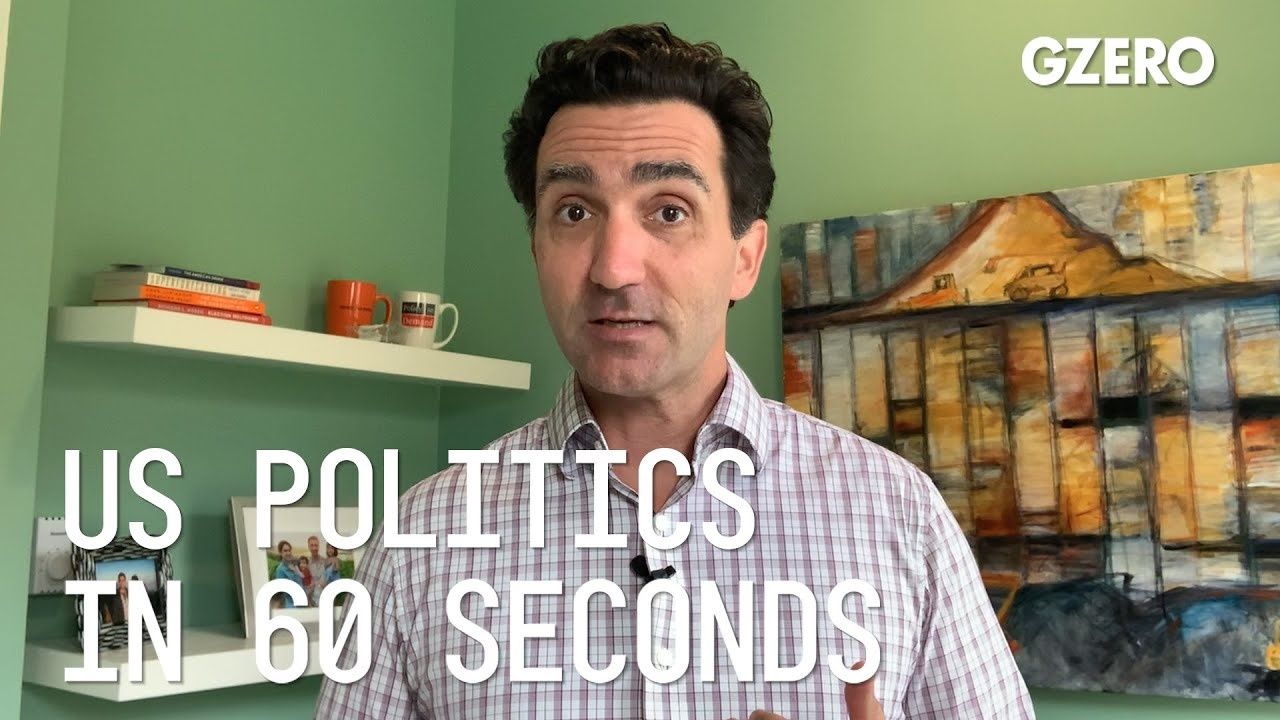US Politics In 60 Seconds
Big picture trends in US Politics

Big Picture Trends in US Politics | US Politics :60 | GZERO Media

Jon Lieber, Eurasia Group's Managing Director for the US, breaks down the US political landscape on US Politics In 60 Seconds:
Today, we're going to start by discussing some of the big picture trends in US politics that are going to affect the election outlook for this year. So, bear with me if this takes a little more than a minute.
When I think of big trends in US politics, I think the number one thing is the growing rural-urban divide between the two parties. If you look back to the 1980 election, the Democrats took about 59% of the vote in the most urban districts, and they took about 56 percent of the vote in the most rural districts in the country. If you fast forward to 2018 and the midterm elections, the Democrats took about 75 percent of the vote in the most urban districts, and they took only 40 percent of the vote in the most rural districts. So, you're going from a three-point spread in the 80s to a 35-point spread today. And that's really one the defining characteristics of how the parties have realigned themselves facing the new electoral reality.
What that means is increasing partisanship as you've got increasing geographic concentration among the two parties. The Democrats are largely becoming a younger, more diverse, in some cases better educated party. The Republican Party is becoming increasingly white, increasingly rural and a little bit older than the Democratic Party. As a result, you're seeing enhanced partisanship across the US political spectrum. People are clustering in areas where they're more likely to come across people who share their partisan views. There's higher correlation between the House, the Senate and the White House, meaning it's more difficult for policymakers to differentiate themselves from their party. And you've got a fracturing media ecosystem where it's easier to hear points of view that reinforce your own. And there's less agreement not only about what the solutions to public policy problems are, but what the problems themselves are.
So, what does that mean for the 2020 election? Well, you're very likely to see a very close election that looks very similar, with a map that looks very similar to the map in 2016. Meaning you've got a number of states that are solidly blue, a number of states that are really solidly red and a small number of states in the middle that will be decided based on these questions of the rural-urban divide.
In particular, three questions that we'll be watching closely are: Do African American voters in cities show up to vote for Joe Biden? Can Trump hold on to his predominately white rural base? In many cases, they flipped over from Obama to Trump in 2016. Can he hold on to them? And three, what happens in the suburbs? Where a lot of educated, college educated Republicans moved away from the Republican Party, giving the House to the Democrats in 2018 midterms? And if that trend continues, it's very good for Joe Biden and could be trouble for President Trump.
So, it should be really interesting election year and I'm looking forward to watching with you.
Walmart’s $350 billion commitment to American manufacturing means two-thirds of the products we buy come straight from our backyard to yours. From New Jersey hot sauce to grills made in Tennessee, Walmart is stocking the shelves with products rooted in local communities. The impact? Over 750,000 American jobs - putting more people to work and keeping communities strong. Learn more here.